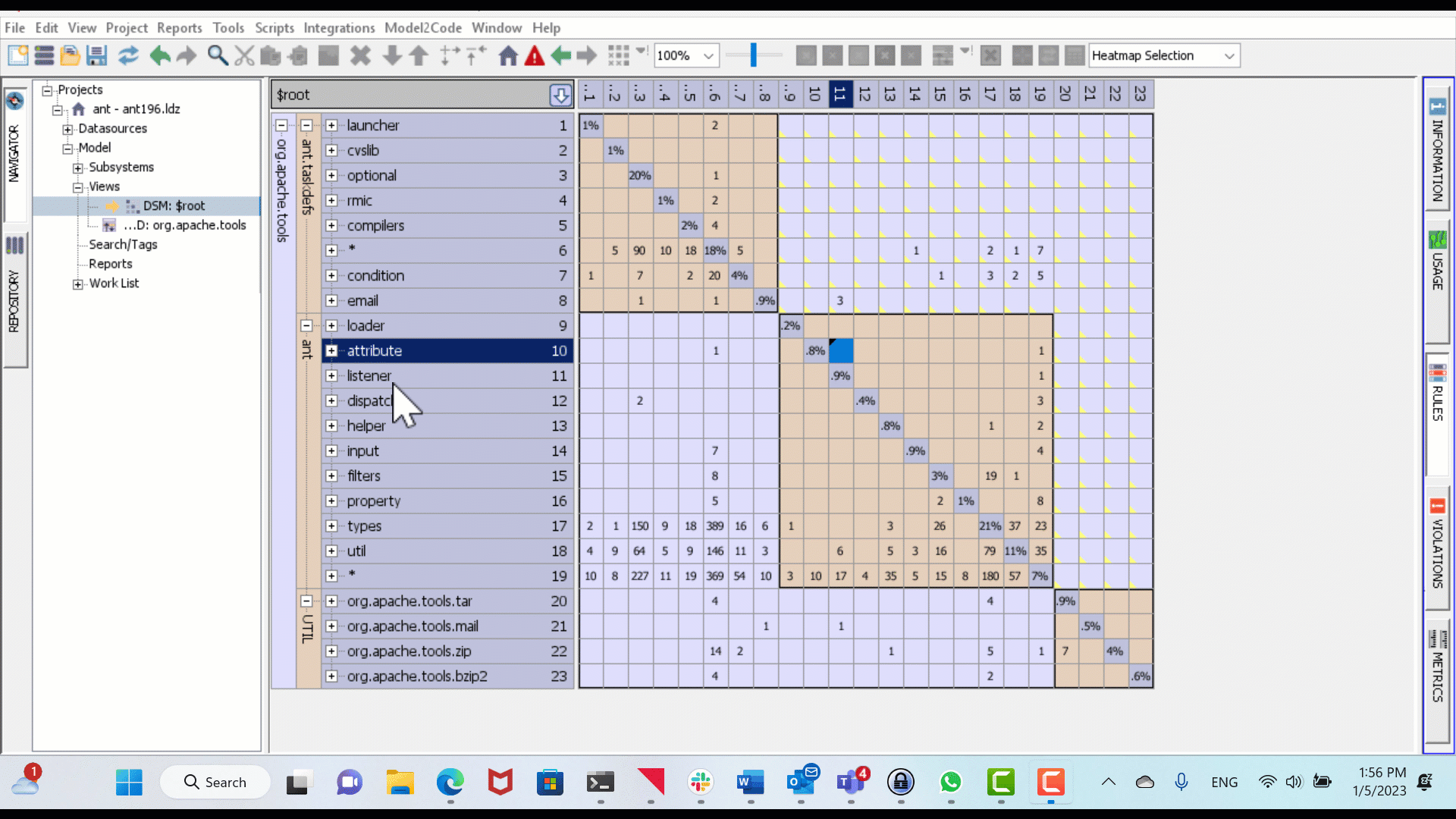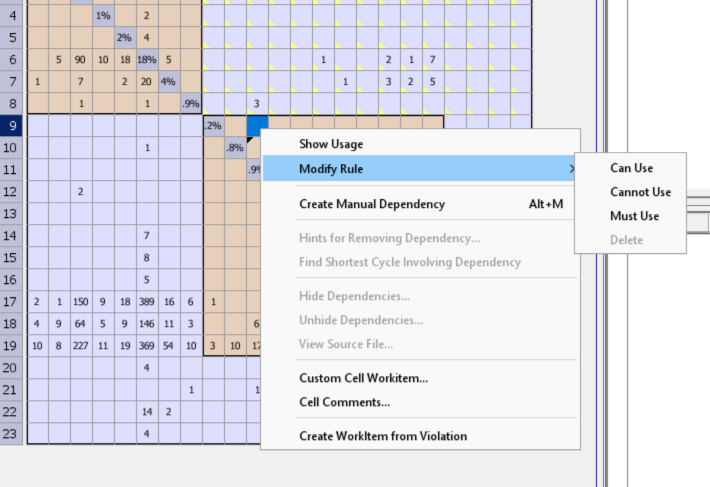New Model2Code Comparison, new Must-Use Rules, customized matrix in Lattix Web and updated modules for MagicDraw, SparxEA and Python

Model2Code Comparison
With the Lattix 2022 Model2Code feature, you can now match UML/SysML model elements to code elements. This enables you to map the source code to the UML/SysML model and vice-versa to discover gaps between the model and the code. We do this by automatically creating dependencies between the model and the code. You will now be able to verify that everything in the original UML/SysML model has been implemented in the code and update the UML/SysML model if something new has been added in the source code. You can also create rules (must-use, cannot-use, and can-use) to enforce the correct architecture and automatically flag violations.
Must-use Rules
We have added a new rule type called a “must-use” rule. A must-use rule creates a violation if there is no dependency in the DSM. One use case of the must-use rule in the Lattix DSM is the ability to turn the Lattix DSM into a traceability matrix. A traceability matrix correlates any two data sources to assist in determining the completeness of a relationship. Our Traci product uses must-use rules to create a Requirements Traceability Matrix (RTM) that maps and traces user requirements, software architecture, and test cases. The main purpose of a Requirements Traceability Matrix is to ensure that all requirements/functionality have associated test cases.
Other Updates:
- Updated MagicDraw module with the ability to load MDZIP files and improved XMI import
- Customized metrics in Lattix Web, you can now control what metrics can be displayed on the Lattix Web dashboard
- Improved Oracle SQL parsing
- Support for JDK 18
- Improved performance for large models
- Updated Understand/Python module



